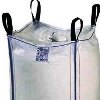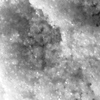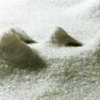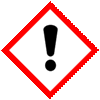| Anmol Chemicals is the pioneer manufacturers of Ammonium Biarbonate, Pharmaceutical Excipients Chemicals in India. We offer Halal and Kosher Ammonium Biarbonate made in an ISO9001, ISO22000 (FSSC22000) and cGMP certified facility. Our group has several manufacturing facilities spread across the world, supported by toll manufacturers and representatives in UAE, Europe, Africa, USA, China and has several associated manufacturing facilities spread across India. All the Information on Physics, Chemistry, Applications, Uses and Technology on Manufacture of Ammonium Biarbonate is in these pages. |
| The units have one or more of the certifications like FDA GMP, ISO 9001, ISO 22000, HACCP, REACH, Kosher & Halal |






Specifications of Ammonium Bicarbonate Manufacturers
Specifications of Ammonium Carbonate Manufacturers
Ammonium Bicarbonate SDS GHS, MSDS Sheet
Ammonium Bicarbonate MSDS Sheet; Material Safety Data Sheet
1. Product Identification
Synonyms: Ammonium hydrogen carbonate; Ammonium acid carbonate
CAS No.: 1066-33-7
EINECS EC Number: 213-911-5
Molecular Weight: 79.06
Chemical Formula: NH4HCO3
Recommended usage: Industrial Manufacturing.
2. Hazards Identification
GHS, Globally Harmonized System Classification in accordance with 29 CFR 1910
Classification according to Regulation (EC) No 1272/2008:
Acute toxicity, Oral Category 4
Hazardous to the aquatic environment, acute hazard Category 3
Labeling according to GHS & Regulation (EC) No 1272/2008
| GHS Label Elements  Irritant |
Signal Words: Warning
Hazard statements:
H302 Harmful if swallowed.
H402: Harmful to aquatic life.
Precautionary statements:
P264 Wash skin thoroughly after handling.
P270 Do not eat, drink or smoke when using this product.
P273 Avoid release to the environment.
P314: Get Medical advice/attention if you feel unwell.
P301+P312: IF SWALLOWED: Call a POISON CENTER or doctor/physician if you feel unwell.
P330: Rinse mouth.
P501 Dispose of contents/ container to an approved waste disposal plant.
Classification according to EU Directives 67/548/EEC or 1999/45/EC:
Xn: Harmful: R22: Harmful if swallowed.
For the full text of the S-statement & R-phrases mentioned in this Section, see Section 16.
HMIS (Perceived): Health hazard: 1, Flammability: 0, Physical hazards: 0
NFPA (Perceived): Health hazard: 1, Fire: 0, Reactivity Hazard: 0
3. Composition/Information on Ingredients
Ingredient: Ammonium Bicarbonate
CAS No.: 1066-33-7
EINECS EC Number: 213-911-5
Percent: 99 - 100%
4. First Aid Measures
Always seek medical attention after first aid measures are provided.
Inhalation: If inhaled, remove to fresh air. If not breathing, give artificial respiration. If breathing is difficult, give oxygen. Get medical attention.
Ingestion: Do NOT induce vomiting unless directed to do so by medical personnel. Never give anything by mouth to an unconscious person. If large quantities of this material are swallowed, call a physician immediately. Loosen tight clothing such as a collar, tie, belt or waistband. If large amounts were swallowed, get medical advice.
Skin Contact: Immediately flush skin with plenty of soap and water for at least 15 minutes. Remove contaminated clothing and shoes. Wash clothing before reuse. Thoroughly clean shoes before reuse. Get medical attention if irritation develops.
Eye Contact: Immediately flush eyes with plenty of water for at least 15 minutes, lifting upper and lower eyelids occasionally. Get medical attention if irritation persists.
5. Fire Fighting Measures
Fire: Ammonium Bicarbonate is not considered to be a fire hazard. Irritating and toxic ammonia gas and nitrogen oxides may form in fires.
Explosion: Not considered to be an explosion hazard.
Fire Extinguishing Media: Use water spray, alcohol-resistant foam, dry chemical or carbon dioxide. Use means suitable for extinguishing surrounding fire.
Special Information: In the event of a fire, wear full protective clothing and NIOSH-approved self-contained breathing apparatus with full face piece operated in the pressure demand or other positive pressure mode.
6. Accidental Release Measures
Small Spill: Use appropriate tools to put the spilled solid in a convenient waste disposal container. Finish cleaning by spreading water on the contaminated surface and dispose of according to authority requirements.
Large Spill: Use a shovel to put the material into a convenient waste disposal container. Prevent further leakage or spillage if safe to do so. Do not let product enter drains. Discharge into the environment must be avoided.
7. Handling and Storage
Keep Ammonium Bicarbonate in a tightly closed container, stored in a cool, dry, ventilated area. Protect against physical damage. Store at temperatures below 80F (27C) to minimize decomposition. Segregate from nitrites and alkaline substances. Storage and transport only combined with food materials or food additives. Separate from flavoring agents. Segregate from strong acids. Segregate from strong bases. Do not store with: Sodium nitrate, nitrite and similar materials. Containers of Ammonium Bicarbonate may be hazardous when empty since they retain product residues (dust, solids); observe all warnings and precautions listed for the product.
8. Exposure Controls/Personal Protection
Airborne Exposure Limits: None established.
Ventilation System: A system of local and/or general exhaust is recommended to keep employee exposures as low as possible. Local exhaust ventilation is generally preferred because it can control the emissions of the contaminant at its source, preventing dispersion of it into the general work area. Please refer to the ACGIH document, Industrial Ventilation, A Manual of Recommended Practices, most recent edition, for details.
Personal Respirators (NIOSH Approved): For conditions of use where exposure to dust or mist is apparent and engineering controls are not feasible, a particulate respirator (NIOSH type N95 or better filters) may be worn. If oil particles (e.g. lubricants, cutting fluids, glycerin, etc.) are present, use a NIOSH type R or P filter. For emergencies or instances where the exposure levels are not known, use a full-face positive-pressure, air-supplied respirator. WARNING: Air-purifying respirators do not protect workers in oxygen-deficient atmospheres.
Skin Protection: Wear protective gloves and clean body-covering clothing.
Eye Protection: Use chemical safety goggles and/or full face shield where dusting or splashing of solutions is possible. Maintain eye wash fountain and quick-drench facilities in work area.
9. Physical and Chemical Properties
Appearance: Ammonium Bicarbonate is fine white crystals.
Odor: Slight ammonia odor.
Solubility: 17.4% @ 20C (68F) in water.
Specific Gravity: 1.59
pH: 7.8
% Volatile by volume @ 21C (70F): 0
Boiling Point: Not applicable.
Melting Point: 107.5C (226F) (Decomposes 36-60C)
10. Stability and Reactivity
Stability: Ammonium Bicarbonate is stable under ordinary conditions of use and storage.
Hazardous Decomposition Products: Burning may produce ammonia, nitrogen oxides. Burning may produce ammonia, carbon monoxide, carbon dioxide, nitrogen oxides.
Hazardous Polymerization: Will not occur.
Incompatibilities: Can react dangerously with acids, caustic alkalis and strong oxidizing agents.
Conditions to Avoid: Heat, incompatibles.
11. Toxicological Information
Acute toxicity: LD50 Oral - Rat - 1576 mg/kg
Carcinogenicity: The product is not classed as carcinogen by IARC, ACGIH, NTP, OSHA.
Mutagenic Effects: No information available
Reproductive Effects: No information available.
Developmental Effects: No information available.
Teratogenicity: No information available.
12. Ecological Information
Toxicity to fish:
LC50 Fish 1: 0.16 - 1.1 mg/l (Exposure time: 96 h - Species: Oncorhynchus mykiss)
LC50 Fish 2: 0.615 - 0.712 mg/l (Exposure time: 96 h - Species: Oncorhynchus mykiss)
Environmental Fate: No information found.
Environmental Toxicity: No information found.
This substance/mixture contains no components considered to be either persistent, bioaccumulative and toxic (PBT), or very persistent and very bioaccumulative (vPvB) at levels of 0.1% or higher.
13. Disposal Considerations
Whatever cannot be saved for recovery or recycling should be managed in an appropriate and approved waste disposal facility. Processing, use or contamination of this product may change the waste management options. State and local disposal regulations may differ from federal disposal regulations. Dispose of container and unused contents in accordance with federal, state and local requirements.
14. Transport Information
DOT (US) &ADR/RID: Not Regulated
IMDG: Not dangerous goods
IATA: Not dangerous goods
15. Regulatory Information
USA:
TSCA Inventory Status: All ingredients are listed on the TSCA inventory.
California Proposition 65: Not Listed
SARA 302: Not Listed
SARA 304: Not Listed
SARA 311: No SARA Hazards
SARA 312: No SARA Hazards
SARA 313: Not Listed
CERCLA: Hazardous Substances RQs is 5000 lbs.
CAS Number is on Right to Know List of PA, MA, NJ
Canada
CAS# 1066-33-7 is listed on Canada's DSL List
Canadian WHMIS Classifications: D2B
16. Other Information
EINECS EC Number: 213-911-5
H302 = Harmful if swallowed.
H402 =: Harmful to aquatic life.
Xn = Harmful.
R22 = Harmful if swallowed.
Safety Phrases:
S 26 In case of contact with eyes, rinse immediately with plenty of water and seek medical advice.
S 37/39 Wear suitable gloves and eye/face protection.
Disclaimer
******************************
Our company provides this Ammonium Bicarbonate SDS information sheet contained herein in good faith but makes no representation as to its comprehensiveness or accuracy. This Ammonium Bicarbonate MSDS sheet is intended only as a guide to the appropriate precautionary handling of the material by a properly trained person using this product. Individuals receiving the information must exercise their independent judgment in determining its appropriateness for a particular purpose.
******************************
Ammonium Carbonate & Bicarbonate BP USP ACS AR Analytical Reagent, FCC Food Grade Manufacturers:
Anmol Chemicals
S-8, SARIFA MANSION, 2ND FLANK ROAD, CHINCHBUNDER, MUMBAI 400009, INDIA
TEL: (OFFICE) 91-22-23770100, 23726950, 23774610, 23723564. FAX: 91-22-23728264
e-mail: anmolc@mtnl.net.in

Exports to USA, Canada, UAE, Dubai, South Africa, Tanzania, Kenya, Nigeria, Egypt, Uganda, Turkey, Mexico, Brazil, Chile, Argentina, Europe Netherlands, Italy, Spain, Germany, Portugal, France, Malaysia, Indonesia, Thailand, Korea, Vietnam, Japan, etc.
Copyright and Usual Disclaimer is Applicable 28 December, 2021